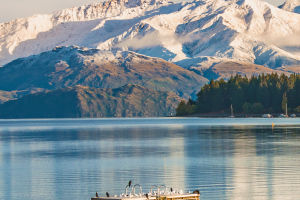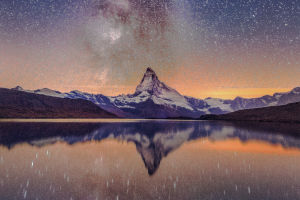Hey Lykkers! Winter hiking in Austria is a magical experience, offering access to serene alpine landscapes blanketed in snow.
Whether you are a seasoned hiker or a beginner looking to embrace the snow-covered beauty, the key to an enjoyable and safe winter adventure lies in proper preparation!
The Golden Rules of Winter Backpacking
Video: BackpackingTV
1. Choose the Right Trails for Winter Conditions
Austria has a wide range of hiking trails, but not all are suited for winter conditions. Some trails are better maintained or have specific winter adaptations like snow-cleared paths or avalanche barriers. The Rofan Mountains in Tyrol, for example, offer a range of marked winter hiking paths with panoramic views.
If you’re new to winter hiking, avoid high-altitude trails until you gain more experience. Lower-elevation hikes, such as those around St. Wolfgang in Salzkammergut, are often less technical and can offer a more relaxed experience in winter.
2. Invest in Proper Winter Hiking Gear
When hiking in cold weather, choosing the right gear is critical for comfort and safety. Waterproof, insulated boots with a good grip are a must, as snow and ice can make even well-trodden paths slippery. Microspikes or crampons will help you stay secure on icy surfaces. Wear moisture-wicking layers that trap heat but allow sweat to escape.
Also, remember that the weather in the Austrian Alps can change quickly, so pack an extra windproof and waterproof jacket. Don’t overlook accessories like gloves, a warm hat, and a neck gaiter to protect your extremities.
3. Check Avalanche Risk Before Heading Out
The Austrian Avalanche Service provides updated avalanche warnings, and many trails have avalanche-risk information posted at trailheads. Check these reports daily and avoid hiking in areas with a high risk of avalanches, especially after heavy snowfalls. Always carry a beacon, shovel, and probe if you’re venturing into high-risk zones.
4. Keep Daylight Hours in Mind
Austria's alpine daylight hours in winter are short, so it’s vital to plan your hike with this in mind. Start your hike early to ensure you have plenty of time to complete it before the sun sets. The winter sun often sets as early as 4 PM in the mountains, so make sure to turn around early enough to avoid hiking in the dark. A headlamp should be part of your gear, just in case you lose track of time or encounter unexpected delays.
5. Hydration and Nutrition Are Key
In winter, it’s easy to forget to drink enough water since you’re not sweating as much as in warmer months. However, dehydration can still set in. Carry a thermos with warm water or tea and sip regularly. For snacks, pack high-energy foods that are easy to consume, like energy bar, nuts, or dried fruit. Avoid heavy meals that could leave you feeling sluggish or uncomfortable in the cold.
6. Understand the Changing Weather Conditions
The weather in the Austrian Alps can change rapidly in the winter, from sunny skies to snowstorms. Always check weather forecasts before heading out, and carry a weather app or mountain weather forecast to stay updated. If you see any signs of worsening weather, such as dark clouds or dropping temperatures, consider cutting your hike short and seeking shelter.
7. Stay Safe and Know Your Limits
Winter hiking demands more physical effort than summer hikes, due to colder temperatures, slippery conditions, and the additional weight of clothing and gear. Always assess your fitness level and make sure you're comfortable with the difficulty of the trail. If conditions worsen or you feel fatigued, don’t hesitate to turn back early. Your safety should always come before reaching your destination.
8. Plan for Emergencies
Even with the best preparation, emergencies can happen. Carry a small first-aid kit, and always have a map or GPS device to help you navigate. Cell phone coverage in mountainous regions can be spotty, so having an offline map or emergency contact information is crucial. A whistle and extra layers in your pack can be lifesaving if you get lost or stuck in cold weather.
9. Respect Local Wildlife and the Environment
Winter is a time when wildlife in Austria becomes particularly vulnerable. Be mindful of your surroundings, keep noise levels down, and stay on marked trails to avoid disturbing animals that may be hibernating or searching for food. Carry out all your trash to help maintain the pristine beauty of the region. The Austrian Alps are protected areas, so respect wildlife and local regulations to ensure they remain undisturbed for future generations.
10. Discover Lesser-Known Trails
Austria is home to world-famous hiking destinations, but some of the most memorable winter hikes can be found off the beaten path. For example, the Seewaldsee near the Tyrolean town of Alpbach offers a quiet, peaceful hike with stunning views of the surrounding mountains and frozen lakes. Exploring less tourist-heavy trails can provide a more intimate winter hiking experience, where you can fully immerse yourself in the untouched beauty of Austria’s winter landscapes.
By following these tips, you’ll be well-prepared for a winter hiking adventure in Austria. From selecting the right trails and gear to understanding the risks of avalanche zones, each step ensures you’ll be able to enjoy the stunning winter scenery safely and comfortably. Remember to stay informed, respect nature, and most importantly, embrace the breathtaking alpine experience that awaits you!







